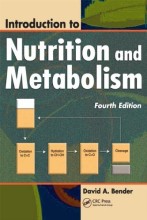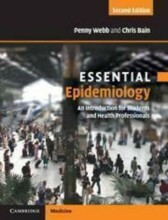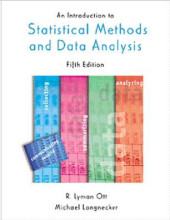NP1 Intro to course & digestive system
22 important questions on NP1 Intro to course & digestive system
How do macronutrients move through the body?
Transformation
How are these movements through the body regulated (for macronutrients)
Endocrine system
What are the settings of metabolism
- Digestion to and absorption of monomers
- Intermediairy metabolism
- Time scale of events (PP vs. PA)
- Physiological adaptation
- Higher grades + faster learning
- Never study anything twice
- 100% sure, 100% understanding
What is (valt onder) intermediairy metabolism?
- Interconversions of absorbed monomers
- Anabolic reactions
- synthesis of body constituents
- Catabolic reactions
- release of energy from food or body constituents
- Unavoidable waste products
Which two phases are the in the meal feeding-metabolic changes?
- Post prandial phase (digestion - absorption - storage)
- input > needs
- anabolic or catabolic disposal
- storage, interconversion, oxidation
- Post absorptive phase (utilisation)
- input < needs
- mobilisation
- turnover, interconversion, oxidation
What are the Diet-induced Thermogenesis (DIT) of a meal
What are the thermogenic effect of a meal
- Post prandial metabolism (PPM) increases heat production (5-20% ingested ME)
- Effects depend on ingested nutrients: proteins > carbohydrates > fat
- Ingested ME is NOT corrected for energetic costs of PPM
What is homeostasis? And name some examples
- Glucose concentration in blood
- pH in the blood
- Oxygen supply
- Body temperature
What are the characteristics of the Digestive tract (GI-tract)
- Outside world inside
- Hollow tube (7m)
- Functional compartments
- one-way transport
- indigestible m
aterial doesn't enter the body
What is the integrated response to a meal?
secretory behavior --> digestion and absorption <-- motor behavior
Elimination
Where are the following things located? And which enzymes of absorptions are done in this location?
- Mouth
- Oesophagus
- Stomach
- Small intestine
- Large intestine
- Rectum
- Anus
Enzymes
Absoprtion
Mouth
- salivary amylase
- lingual lipase
Stomach
- Gastric acid
- pepsin
- gastric lipase
- alcohol absorption
Small intesine
- pancreatic amylase
- lipase, phospholipase
- trypsin, chymotrypsin, elastin
- dipeptidases
- disaccharidases
- monosaccharides
- amino acids
- fatty acids, glycerol, fats
- water
Large intestine
- bacterial fermentation
- absorption of water
The small intestine is divided into three functional regions. What are the secretion, digestion, absorption and motility of these regions?
Jejunum (2 meter)
Ileum (3 meter)
SEE IMAGE
Secretion
- Duodenum
- CCK, Secretin, GIP, HCO3-
- Ileum
- PYY, HCO3-
- Intraluminal and surface digestion --> highest is duodenum, lowest in ileum
- Duodenum
- Fe
- Jejunum
- ions, nutrients, H2O
- Ileum
- Bile acids, vitamins B12
Motility
- Segmentation (digestive phase)
- Peristalsis (interdigestive phase)
What are the main parts of a villus?
- cells shed at tip of villus
- absorptive enterocyte
- mucus secreting goblet cell
- white dots on picture (not this picture)
- cell proliferation in crypt
- lacteal
- lymphatic drainage
- venous drainage
- arterial blood supply
What are the 4 layers of the GI-tract (from inside (lumen) to outside)
- Mucosa
- secretion and absorption
- Submucosa
- vascular layer (support) [messier plexus (muscular mucosa)]
- Muscularis
- segmental contractions [circular / longitudinal layers; Auerbach's plexus]
- Serosa
- protective layer
Which part of the body has the larges musculature?
What happens with the gut retention for a protein meal?
What are the characteristics of the mucosal surface?
- Longitudinal foldings: Plicae circularis
- Fingerlike projections: 0.5-1.5 mm villi
- 20-40 villi per mm^2
- Covered with microvilli (brush border)
- absorptive area: 250-300 m^2 (tennis field: 175m^2)
How does the gut stimulate evoke digestive responses via the enteric and the central nervous systems?
AND
Stimuli > Sensors (mechanical and chemical) > Enteric nervous system > Effectors (motility, secretion, blood flow)
What are the three mechanisms of communication mediate responses in the GI-tract?
- Endocrine
- via circulation (blood), hormones
- e.g. Gastrin
- Neurocrine
- via neurons (CNS) releasing messengers, neurotransmitters
- e.g. GRP, Acetylcholine
- Paracrine
- local cell-to-cell communication
- e.g. Somatostatin
What does the regulation of peristalsis require?
- contraction of propulsive segment
- relaxation in receiving segment
What are the three different ways for absorption?
- Simple diffusion
- they cross into intestinal cells freely
- Facilitated diffusion
- they need a specific carrier to transport them from one side of the cell membrane to the other
- Active transport
- these nutrients move against a concentration gradient, which requires energy
What are the phases of MMC in humans?
- Phase 1 40 min rest
- Phase 2 40 min start peristalsis
- Phase 3 10 min Max. Peristalsis
- Prevention of bacterial stasis
- Final cleaning non-digestible parts
What is the transit time in humans for
- stomach
- small intestine
- large intestine
- stomach
- 1-5 hours
- small intestine
- 1.5 hours
- large intestine
- 1-2 days
The question on the page originate from the summary of the following study material:
- A unique study and practice tool
- Never study anything twice again
- Get the grades you hope for
- 100% sure, 100% understanding
































